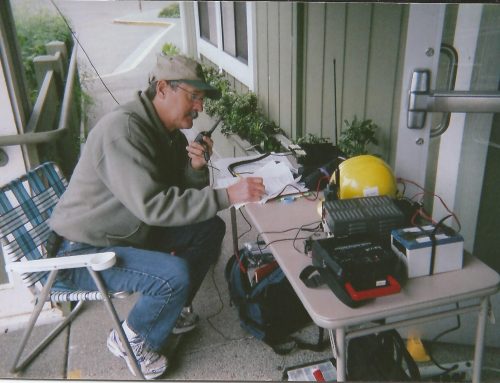A few of my blogs have “talked” about how licensed amateur radio operators – also known as “Hams” – have stepped up to the plate during an emergency situation, such as a hurricane, flood, wildfire or earthquake and provided communications when everything else was inoperable. Next week, at our annual Sonoma-Marin Fair (June 20-24), attendees will have an opportunity to “walk the walk” with these volunteer Hams and see and hear them in action.
Yesterday, I watched two veteran Hams – Eric Swanson and Harold Nygaard – install an antenna so that they and other volunteers from the ACS South County Team (ACS = Auxiliary Communications Service) will be able demonstrate and explain how amateur or Ham radio operates. To get you started, here are a few terms Hams use to explain what they do. (Courtesy of “Ham Radio for Dummies” by Ward Silver):
Antenna – a device that picks up or sends out radio frequency energy
Frequency-bands – a group of frequencies where amateur communications are authorized
Amateur Station – a station licensed in the amateur radio service, including necessary equipment, used for amateur communications
Transmitter – a device that produces radio-frequency signals
Receiver – a device that converts radio waves into signals you can hear and see
Dihdah- datditdahdah-dahdit – Morse code which you no longer need to know in order to get started with “hamming it up.”
The photographs, below, illustrate what Eric and Harold had to do in order to install a wire antenna known as a dipole. During the Fair, hands-on demonstrations will take place in the “Crossroads Academy” modular building (on the right along the main concourse), from Noon until 7:00 p.m., everyday of the Fair. Drop by and “tune in” with those amateur radio operators who love to “Ham-it Up!”


